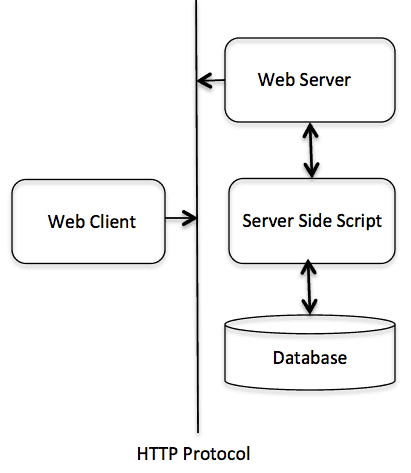Chào các bạn đến với phanlamcoder.blogspot.com !
Contents
- Khái niệm cơ bản trong lập trình hướng đối tượng (OOP)
- Tính chất của OOP
- OOP trong Java
- Những câu hỏi hay gặp về OOP trong Java
Khái niệm cơ bản trong lập trình hướng đối tượng (OOP)
Quay trở lại thời kỳ trước khi khai sinh lập trình hướng đối tượng, các ngôn ngữ đã sử dụng lập trình hướng thủ tục :
Chương trình = Cấu trúc dữ liệu(CTDL) + Giải thuật(GT)
Nếu CTDL thay đổi thì GT cũng phải thay đổi theo, các bài toán được chia làm các function => khó xây dựng chương trình lớn, khó nâng cấp, khó tái sử dụng, ...
Vì vậy cần phải tìm ra mô hình/hướng lập trình mới để đáp ứng các nhu cầu trên, đó là lý do OOP ra đời.
OOP là một triết lý thiết kế, hay còn gọi là một mô hình trong lập trình. OOP được áp dụng trong hầu hết các ngôn ngữ lập trình như C++, Java, C#, PHP, JS, ...
Khái niệm:
Lập trình hướng đối tượng là một phương pháp để thiết kế một chương trình bởi sử dụng các lớp và các đối tượng. Nó làm đơn giản hóa việc duy trì và phát triển phần mềm, một số khái niệm cơ bản:
- Đối tượng trong cụm từ "lập trình hướng đối tượng" nghĩa là một thực thể trong thế giới thực, chẳng hạn như bàn, quả bóng, con bò, …
- Class là một template (mẫu) thể hiện các đặc tính và hành vi của đối tượng.
- Object là một thể hiện của class (class là tập hợp các object).
Để hiểu rõ hơn về Class và Object các bạn có thể tham khảo ví dụ sau:
Bạn muốn đem đối tượng "xe" vào chương trình của bạn?
Đầu tiên bạn phải biết xe có những thuộc tính gì (màu xe, tốc độ cao nhất, ...) và nó có thể thực hiện chức năng gì (chạy, hú còi, blabla...)
Từ đó xây dựng một class Xe khai báo thuộc tính(properties) và chức năng(method) bên trong class.
Sau đó ta sử dụng class Xe để tạo ra instances (các thể hiện của đối tượng - hay còn gọi là object :)) ) bằng toán tử "new" :
Xe xe1 = new Xe("đỏ", 500); // tạo ra xe1 có màu đỏ, tốc độ cao nhất 500km/h
xe1.chay(); // xe1 thực hiện chức năng quay bánh
Xe xe2 = new Xe("xanh", 200); //tạo ra xe2 có màu xanh, tốc độ cao nhất 200km/h
xe2.chay(); // xe2 chạy
xe2.hucoi() //xe2 hú còi
Tổng quát như sau
ClassName objectName = new className(params);
// parameter(tham số) có thể có hoặc không, chúng ta sẽ tìm hiểu sau.
Như vậy từ 1 class ta có thể tạo vô số các object, hay nói cách khác class là khuôn mẫu để tạo ra các object.
- Đối tượng trong cụm từ "lập trình hướng đối tượng" nghĩa là một thực thể trong thế giới thực, chẳng hạn như bàn, quả bóng, con bò, …
- Class là một template (mẫu) thể hiện các đặc tính và hành vi của đối tượng.
- Object là một thể hiện của class (class là tập hợp các object).
Để hiểu rõ hơn về Class và Object các bạn có thể tham khảo ví dụ sau:
Bạn muốn đem đối tượng "xe" vào chương trình của bạn?
Đầu tiên bạn phải biết xe có những thuộc tính gì (màu xe, tốc độ cao nhất, ...) và nó có thể thực hiện chức năng gì (chạy, hú còi, blabla...)
Từ đó xây dựng một class Xe khai báo thuộc tính(properties) và chức năng(method) bên trong class.
Sau đó ta sử dụng class Xe để tạo ra instances (các thể hiện của đối tượng - hay còn gọi là object :)) ) bằng toán tử "new" :
Xe xe1 = new Xe("đỏ", 500); // tạo ra xe1 có màu đỏ, tốc độ cao nhất 500km/h
xe1.chay(); // xe1 thực hiện chức năng quay bánh
Xe xe2 = new Xe("xanh", 200); //tạo ra xe2 có màu xanh, tốc độ cao nhất 200km/h
xe2.chay(); // xe2 chạy
xe2.hucoi() //xe2 hú còi
Tổng quát như sau
ClassName objectName = new className(params);
// parameter(tham số) có thể có hoặc không, chúng ta sẽ tìm hiểu sau.
// parameter(tham số) có thể có hoặc không, chúng ta sẽ tìm hiểu sau.
Như vậy từ 1 class ta có thể tạo vô số các object, hay nói cách khác class là khuôn mẫu để tạo ra các object.
Tính chất của OOP
OOP có 4 tính chất quan trọng đó là:
- Tính kế thừa (inheritance): một đối tượng có thể có được các thuộc tính hoặc hành vi của đối tượng khác.
- Tính đa hình (polymorphism): một tác vụ có thể được thực hiện theo nhiều cách khác nhau.
- Tính trừu tượng (abstraction): ẩn chi tiết bên trong và hiển thị tính năng.
- Tính đóng gói (encapsulation): gắn kết code và dữ liệu cùng với nhau vào trong một đơn vị unit đơn.
Các khái niệm trên có thể hơi khó hiểu, nhưng đừng hoang mang, hãy xem phần tiếp theo để có thể hiểu rõ hơn về 4 tính chất này.
OOP trong Java
- Tính kế thừa: tính chất này thể hiện qua việc một class có thể kế thừa một class khác bằng từ khóa extends (trong java không có đa kế thừa), một class có thể triển khai nhiều interface bằng từ khóa implements.
- Tính đa hình: một method có thể được thực hiện theo nhiều cách khác nhau bằng các phương thức overriding(ghi đè) và overloading(nạp chồng).
- Tính trừu tượng: việc định nghĩa một method nhưng không khai báo cách triển khai thông qua từ khóa abstract.
- Tính đóng gói: client chỉ sử dụng method mà mình được phép sử dụng mà không quan tâm đến cách mà method đó triển khai, nội dung của tính chất này đc thể hiện qua các phương thức getter & setter và access modifier.
Các khái niệm, từ khóa quan trọng:
- Access modifier: dùng để giới hạn phạm vi truy cập của một thuộc tính, một method hoặc một class, nằm ở vị trí đầu tiên khi khai báo chúng. Nếu không chỉ rõ access modifier thì mặc định sẽ là Default.
 |
| Class: lớp hiện tại, Package: lớp chung package với lớp hiện tại, Subclass: lớp con, Global: toàn cục |
- Abstract:
+ dùng để định nghĩa lớp hoặc method là abstract (thuần ảo) :
+ phương thức thuần ảo là phương thức không có khai báo cách triển khai (chỉ có vỏ, không có ruột :)) ).
+ lớp thuần ảo là lớp có thể chứa phương thức thuần ảo.
+ phương thức thuần ảo phải nằm trong một lớp thuần ảo, còn lớp thuần ảo có thể chứa hoặc không chứa phương thức thuần ảo.
+ chúng ta không thể tạo đối tượng bằng lớp thuần ảo.
- Interface:
+ là một tập hợp các phương thức không được khai báo cách triển khai (giống như abstract method) và kết thúc bằng dấu chấm phẩy. (định nghĩa này còn được mở rộng trọng phiên bản java >7, các bạn có thể tìm hiểu ở bài học sau).
+ các class có thể implements interface và bắt buộc phải triển khai từng method trong nó.
+ trong interface có thể có thuộc tính nhưng đa phần thuộc tính đó đều là hằng số.
- Constructor:
+ là phương thức đặc biệt có tên trùng với tên lớp và không có kiểu trả về.
+ phương thức khởi tạo đối tượng, khởi tạo các thuộc tính của đối tượng từ tham số bên ngoài hoặc tự khởi tạo mặc định.
- Overriding: lớp con ghi đè lên một phương thức của lớp cha hoặc của interface mà nó implements.
- Overloading: cho phép khai báo 2 hoặc nhiều phương thức cùng tên nhưng khác tham số truyền vào.
- Từ khóa quan trọng:
+ this: tham chiếu đến đối tượng của lớp hiện tại.
+ super: tham chiếu đến đối tượng lớp cha của lớp hiện tại.
+ static: chỉ định một thuộc tính, một method hay một khối lệnh là tĩnh, nghĩa là nó được khởi tạo/thực thi một lần duy nhất trong chương trình và được truy cập trực tiếp thông qua class mà không cần phải khởi tạo đối tượng. Mục đích để khai báo một tài nguyên dùng chung cho tất cả các đối tượng => giảm chi phí bộ nhớ.
+ final: dùng trong nhiều ngữ cảnh:
- thuộc tính: khi khai báo là hằng số (không thể thay đổi sau khi khai báo).
- method: khi không muốn method bị ghi đè.
- lớp: khi không muốn lớp bị kế thừa.




